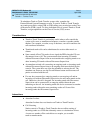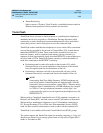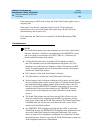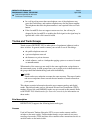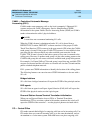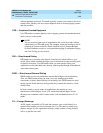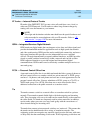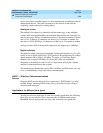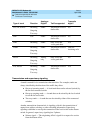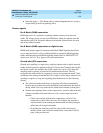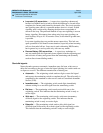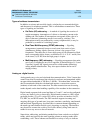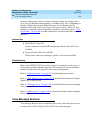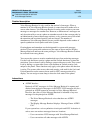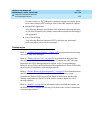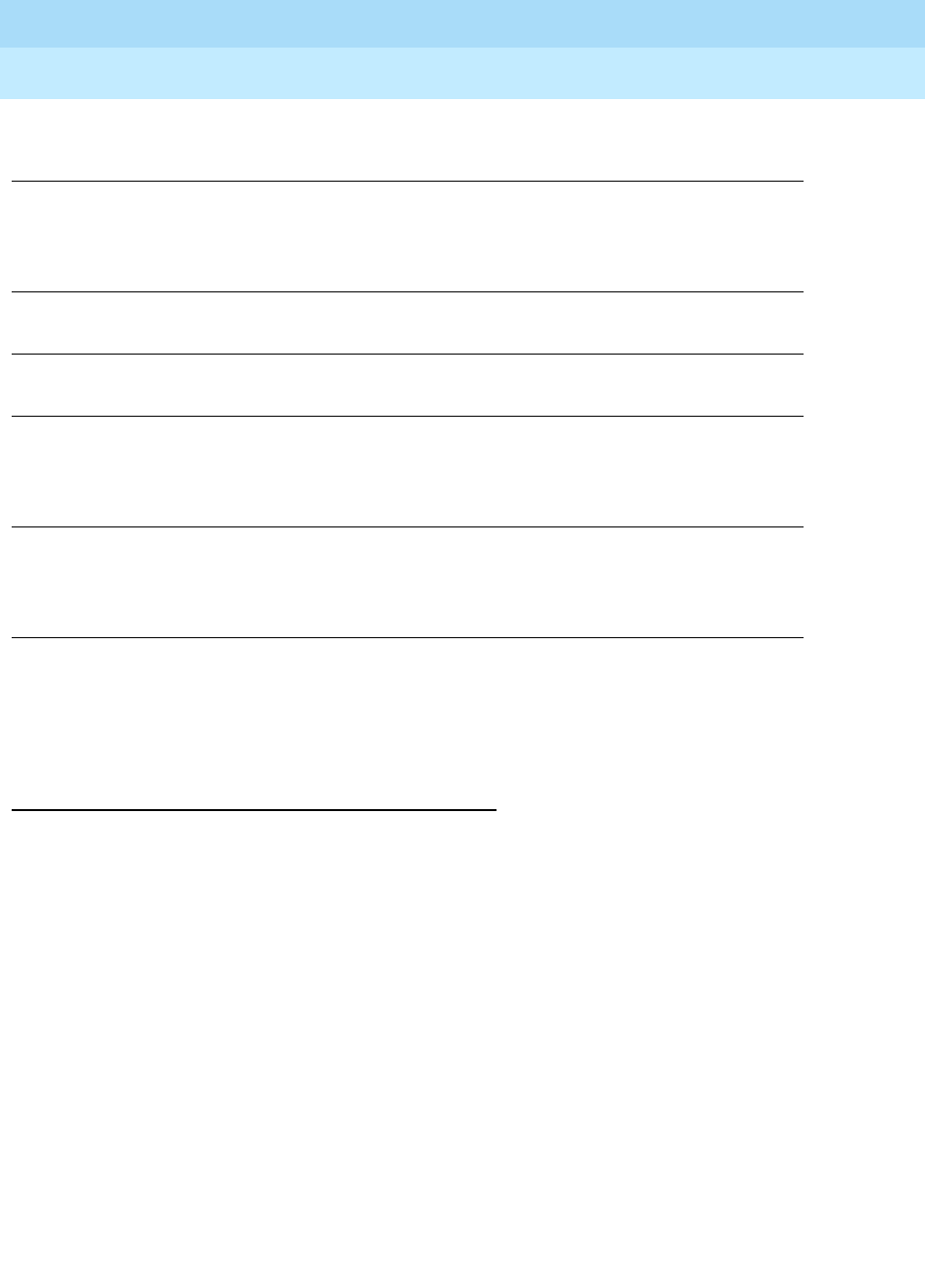
DEFINITY ECS Release 8.2
Administrator’s Guide
555-233-506
Issue 1
April 2000
Features and technical reference
1569Trunks and Trunk Groups
20
Transmission and supervisory signaling
A trunk is named for its transmission characteristics. For example, trunks are
always classified by the direction of the traffic they allow:
■ One-way incoming trunk — A local trunk that can be selected (seized) by
the far-end connected switch.
■ One-way outgoing trunk — A trunk that can be seized by the local switch
to call the far-end switch.
■ Two-way trunk — A trunk that can be seized by either of the connected
switches.
Another transmission characteristic is signaling, which is the transmission of
supervision, address, alerting, or other switching information. Supervisory
signaling establishes or sets up the connection of the local switch to the distant
switch. In general, supervisory signaling has 2 phases:
■ Seizure signal — The originating office’s signal for a request for service
from the distant office.
Type of trunk Direction
Analog or
Digital? Traffic supported
Transmits
digits?
CO, FX, WATS Incoming
Outgoing
Two-way
Either Any kind of voice or
data traffic.
No
CPE N.A. Either Any kind of voice or
data traffic.
No
DID Incoming Either Only voice and
voice-grade data.
Yes
DIOD Incoming
Outgoing
Two-way
Either Any kind of voice or
data traffic.
Only for
incoming calls
PCOL Incoming
Outgoing
Two-way
Analog
only
Only voice and
voice-grade data.
No
Tie, Access Incoming
Outgoing
Two-way
Either Any kind of voice or
data traffic.
Yes



